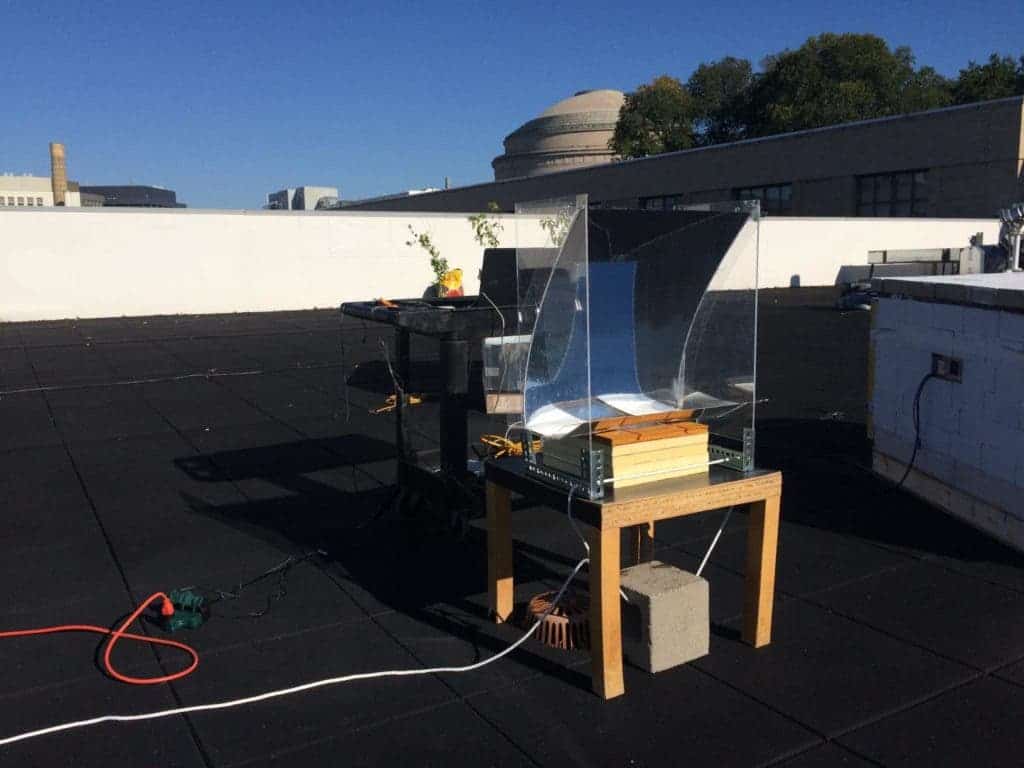MIT engineers have developed a convenient, lightweight device that uses energy from the sun to turn water into superheated steam (steam that is hotter than 100°C). The hot steam pumped out by the system can be used to sterilize medical equipment, as well as for use in cooking and cleaning in remote locations or in poor regions with no access to electricity. A scaled up version could also be useful in an industrial setting where it could be could be collected and condensed to produce desalinated, distilled drinking water.
The device is about the size and thickness of a small digital tablet or Kindle. Its structure is like a sandwich, with a top layer made of a metal-ceramic composite that efficiently absorbs heat from the sun and a bottom layer that emits that heat to the water below. Once the water starts boiling, the steam rises back into the device where it is funneled through the middle layer — a material resembling foam that further heats the steam above the boiling point. Finally, the superheated steam is pumped out through a single tube.
“It’s a completely passive system — you just leave it outside to absorb sunlight,” said Thomas Cooper, assistant professor of mechanical engineering at York University, who led the work as a postdoc at MIT. “You could scale this up to something that could be used in remote climates to generate enough drinking water for a family, or sterilize equipment for one operating room.”
Previously, the same researchers demonstrated an earlier version of their passive solar heater — a graphite-covered carbon foam that floats on water. Its main drawback, however, was that it would eventually become contaminated with salt and other impurities in water.
The MIT engineers solved this problem by suspending the device above the water and using more efficient heat-absorbing materials.
“It’s this clever engineering of different materials and how they’re arranged that allows us to achieve reasonably high efficiencies with this non-contact arrangement,” Cooper said.
The researchers first tested the passive water heater in the lab, using a solar simulator instead of natural sunlight. Water heated this way crossed the boiling point, producing superheated steam at 122°C, under conditions that mimicked a clear, sunny day. The device was also tested in real-life, ambient conditions on the roof of MIT’s Building 1. To increase the sun’s intensity, the team set up a simple solar concentrated (a curved mirror that collects and redirects sunlight into the solar heater). The structure was able to produce steam at 146°C over the course of 3.5 hours.
Later, the researchers showed how their device produced steam from seawater and how this steam was collected to produce pure, distilled water.
“This design really solves the fouling problem and the steam collection problem,” said Gang Chen, the Carl Richard Soderberg Professor of Power Engineering at MIT. “Now we’re looking to make this more efficient and improve the system. There are different opportunities, and we’re looking at what are the best options to pursue.”
The findings were published in the journal Nature Communications.










